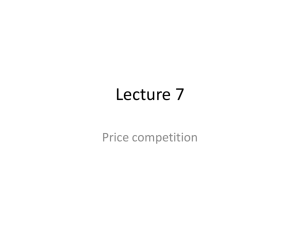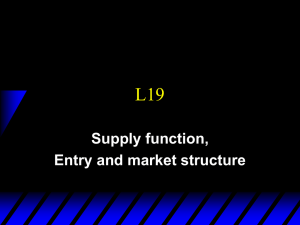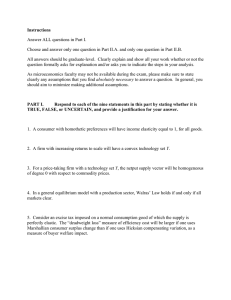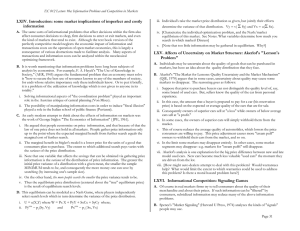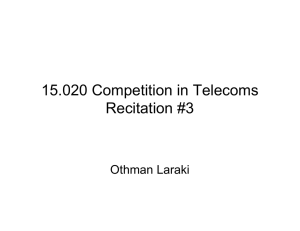Imperfect Competition and Strategic Interaction Exercise
advertisement
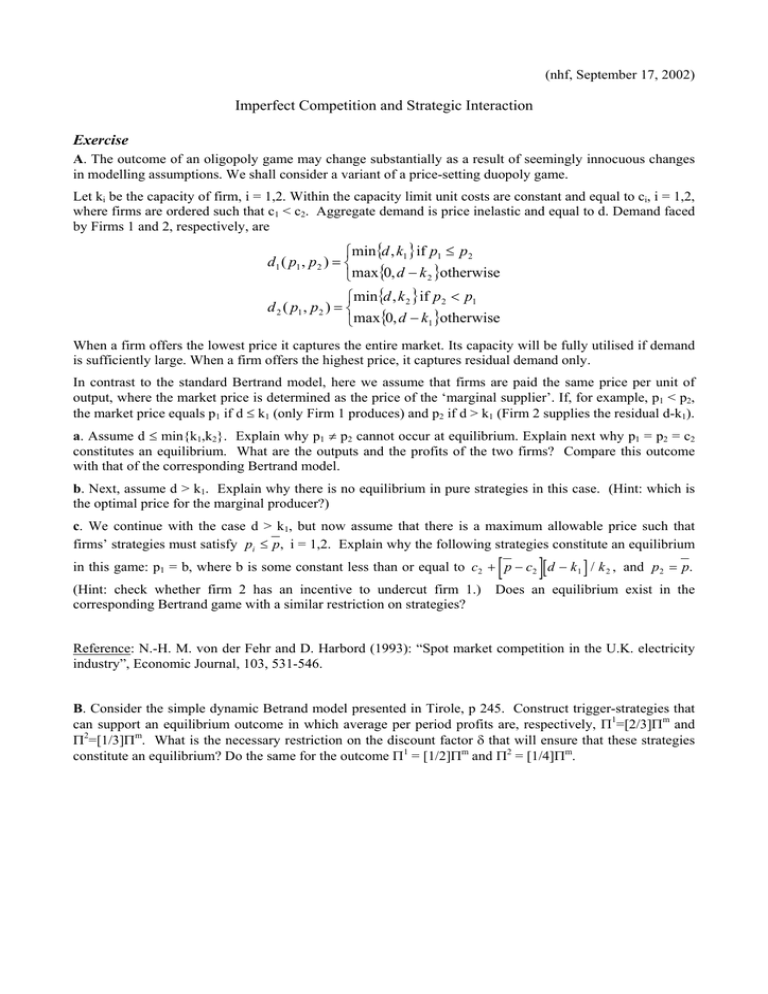
(nhf, September 17, 2002)
Imperfect Competition and Strategic Interaction
Exercise
A. The outcome of an oligopoly game may change substantially as a result of seemingly innocuous changes
in modelling assumptions. We shall consider a variant of a price-setting duopoly game.
Let ki be the capacity of firm, i = 1,2. Within the capacity limit unit costs are constant and equal to ci, i = 1,2,
where firms are ordered such that c1 < c2. Aggregate demand is price inelastic and equal to d. Demand faced
by Firms 1 and 2, respectively, are
min{d , k1 } if p1 ≤ p2
d1 ( p1 , p2 ) =
max{0, d − k 2 }otherwise
min{d , k 2 } if p2 < p1
d 2 ( p1 , p2 ) =
max{0, d − k1 }otherwise
When a firm offers the lowest price it captures the entire market. Its capacity will be fully utilised if demand
is sufficiently large. When a firm offers the highest price, it captures residual demand only.
In contrast to the standard Bertrand model, here we assume that firms are paid the same price per unit of
output, where the market price is determined as the price of the ‘marginal supplier’. If, for example, p1 < p2,
the market price equals p1 if d ≤ k1 (only Firm 1 produces) and p2 if d > k1 (Firm 2 supplies the residual d-k1).
a. Assume d ≤ min{k1,k2}. Explain why p1 ≠ p2 cannot occur at equilibrium. Explain next why p1 = p2 = c2
constitutes an equilibrium. What are the outputs and the profits of the two firms? Compare this outcome
with that of the corresponding Bertrand model.
b. Next, assume d > k1. Explain why there is no equilibrium in pure strategies in this case. (Hint: which is
the optimal price for the marginal producer?)
c. We continue with the case d > k1, but now assume that there is a maximum allowable price such that
firms’ strategies must satisfy pi ≤ p, i = 1,2. Explain why the following strategies constitute an equilibrium
[
]
in this game: p1 = b, where b is some constant less than or equal to c2 + p − c2 [ d − k 1 ] / k 2 , and p2 = p.
(Hint: check whether firm 2 has an incentive to undercut firm 1.)
corresponding Bertrand game with a similar restriction on strategies?
Does an equilibrium exist in the
Reference: N.-H. M. von der Fehr and D. Harbord (1993): “Spot market competition in the U.K. electricity
industry”, Economic Journal, 103, 531-546.
B. Consider the simple dynamic Betrand model presented in Tirole, p 245. Construct trigger-strategies that
can support an equilibrium outcome in which average per period profits are, respectively, Π1=[2/3]Πm and
Π2=[1/3]Πm. What is the necessary restriction on the discount factor δ that will ensure that these strategies
constitute an equilibrium? Do the same for the outcome Π1 = [1/2]Πm and Π2 = [1/4]Πm.






